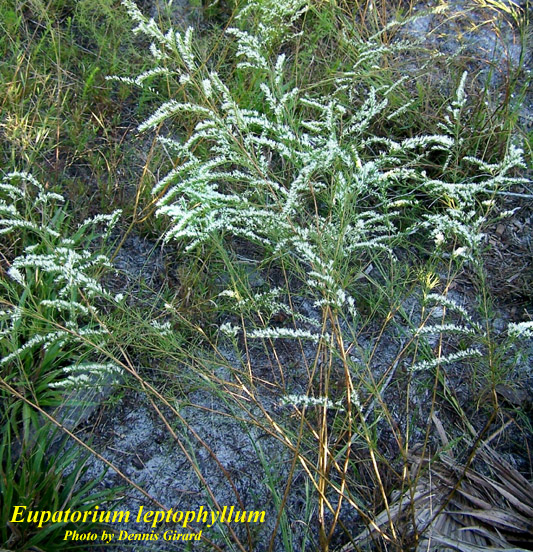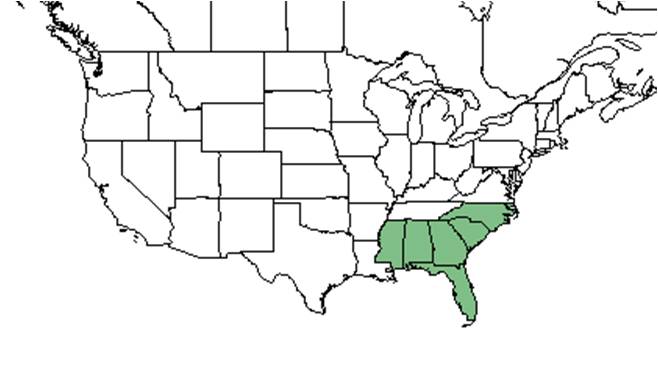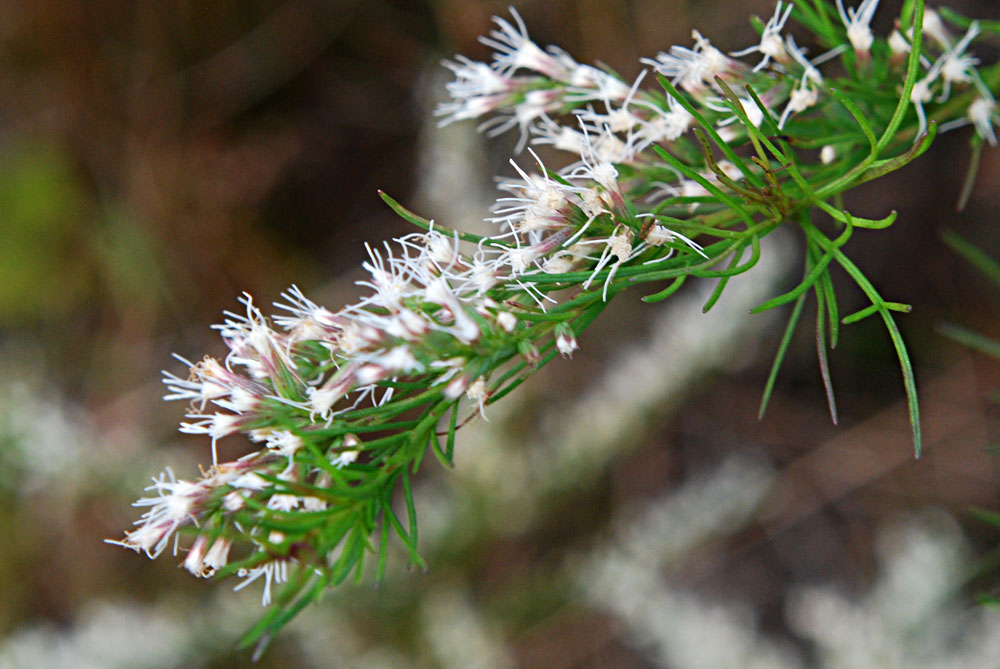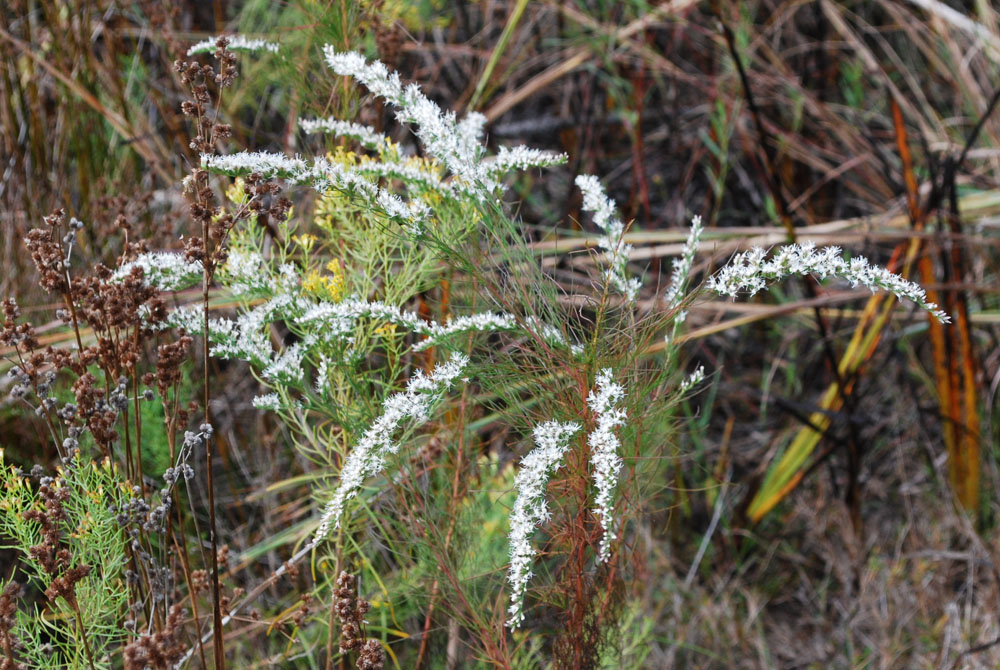Difference between revisions of "Eupatorium leptophyllum"
Juliec4335 (talk | contribs) |
Juliec4335 (talk | contribs) |
||
| Line 38: | Line 38: | ||
Associated species include ''Cladium jamaicense, E. capillifolium, E. compositifolium, Eleocharis robbinsii, Fuirena pumila, Habeneria repens, Triadenum virginicum, Ludwigia, Rhynchospora, Xyris. Bidens, Sagittaria, Nuphar, Polygonum pensylvaticum. Hypericum, Ilex myrtifolia,'' and ''Nyssa biflora''. <ref name="FSU Herbarium"/> | Associated species include ''Cladium jamaicense, E. capillifolium, E. compositifolium, Eleocharis robbinsii, Fuirena pumila, Habeneria repens, Triadenum virginicum, Ludwigia, Rhynchospora, Xyris. Bidens, Sagittaria, Nuphar, Polygonum pensylvaticum. Hypericum, Ilex myrtifolia,'' and ''Nyssa biflora''. <ref name="FSU Herbarium"/> | ||
| − | ''Eupatorium leptophyllum'' is an indicator species for the Central Florida Flatwoods/Prairies community | + | ''Eupatorium leptophyllum'' is an indicator species for the Central Florida Flatwoods/Prairies and Wet Depression Prairies community types as described in Carr et al. (2010).<ref>Carr, S.C., K.M. Robertson, and R.K. Peet. 2010. A vegetation classification of fire-dependent pinelands of Florida. Castanea 75:153-189.</ref> |
===Phenology=== <!--Timing off flowering, fruiting, seed dispersal, and environmental triggers. Cite PanFlora website if appropriate: http://www.gilnelson.com/PanFlora/ --> | ===Phenology=== <!--Timing off flowering, fruiting, seed dispersal, and environmental triggers. Cite PanFlora website if appropriate: http://www.gilnelson.com/PanFlora/ --> | ||
Revision as of 12:47, 23 July 2020
| Eupatorium leptophyllum | |
|---|---|

| |
| Photo by Dennis Girard, Atlas of Florida Vascular Plants | |
| Scientific classification | |
| Kingdom: | Plantae |
| Division: | Magnoliophyta - Flowering plants |
| Class: | Magnoliopsida - Dicotyledons |
| Order: | Apiales |
| Family: | Apiaceae ⁄ Umbelliferae |
| Genus: | Eupatorium |
| Species: | E. leptophyllum |
| Binomial name | |
| Eupatorium leptophyllum DC. | |

| |
| Natural range of Eupatorium leptophyllum from USDA NRCS Plants Database. | |
Common name: False fennel
Contents
Taxonomic notes
Synonym: Eupatorium capillifolium var. leptophyllum (A.P. de Candolle) H.E. Ahles
The genus Eupatorium honors a first century Greek king who discovered an antidote to a poison derived from this family.[1]
Description
A description of Eupatorium leptophyllum is provided in The Flora of North America.
It is a short lived perennial with glabrous stems that reaches around 1 to 2 meters tall.[2] The young stems have few hairs and the leaves are finely divided.[3]
Distribution
Ecology
Habitat
It is found in wet areas, shallow water and at the edges of ponds.[2] Occurs wet, peaty soil such as in cypress ponds, along the shores of the ponds, floating islands in the ponds, wet peaty depression, mixed pine and oak forests. [4] Also, they are found in human disturbed areas such as roadsides, near artificial ponds,and weedy fields. [4]
Associated species include Cladium jamaicense, E. capillifolium, E. compositifolium, Eleocharis robbinsii, Fuirena pumila, Habeneria repens, Triadenum virginicum, Ludwigia, Rhynchospora, Xyris. Bidens, Sagittaria, Nuphar, Polygonum pensylvaticum. Hypericum, Ilex myrtifolia, and Nyssa biflora. [4]
Eupatorium leptophyllum is an indicator species for the Central Florida Flatwoods/Prairies and Wet Depression Prairies community types as described in Carr et al. (2010).[5]
Phenology
Have been observed flowering from August to November. [4]
Pollination
The following Hymenoptera families and species were observed visiting flowers of Eupatorium leptophyllum at Archbold Biological Station: [6]
Halictidae: Lasioglossum nymphalis, L. placidensis
Conservation and management
Cultivation and restoration
Photo Gallery
Flowers of Eupatorium leptophyllum Photo by Wayne Matchett, SpaceCoastWildflowers.com
Flowers of Eupatorium leptophyllum Photo by Wayne Matchett, SpaceCoastWildflowers.com
References and notes
- ↑ [South Carolina Native Plant Society]Accessed: December 11, 2015
- ↑ 2.0 2.1 [[1]]Accessed: December 11, 2015
- ↑ [[2]] Accessed: December 7, 2015
- ↑ 4.0 4.1 4.2 4.3 Florida State University Robert K. Godfrey Herbarium database. URL: http://herbarium.bio.fsu.edu. Last accessed: October 2015. Collectors: Loran Anderson, Wm. G. Atwater, Wilson Baker, H.A. Davis, J.P. Gillespie, R.K. Godfrey, R.D. Houk, C. Jackson, Anne Johnson, Robert L. Lazor, Holly Maurushat, Sidney McDaniel, R.E. Perdue, Paul O. Schallert, and Cecil R. Slaughter. States and Counties: Florida: Bay, Dade, Dixie, Franklin, Gilchrist, Jackson, Lake, Leon, Madison, Marion, Nassau, Okaloosa, Putnam, Seminole, Suwannee, Taylor, Volusia, Wakulla, Walton, Washington. Georgia: Baker.
- ↑ Carr, S.C., K.M. Robertson, and R.K. Peet. 2010. A vegetation classification of fire-dependent pinelands of Florida. Castanea 75:153-189.
- ↑ Deyrup, M.A. and N.D. 2015. Database of observations of Hymenoptera visitations to flowers of plants on Archbold Biological Station, Florida, USA.

